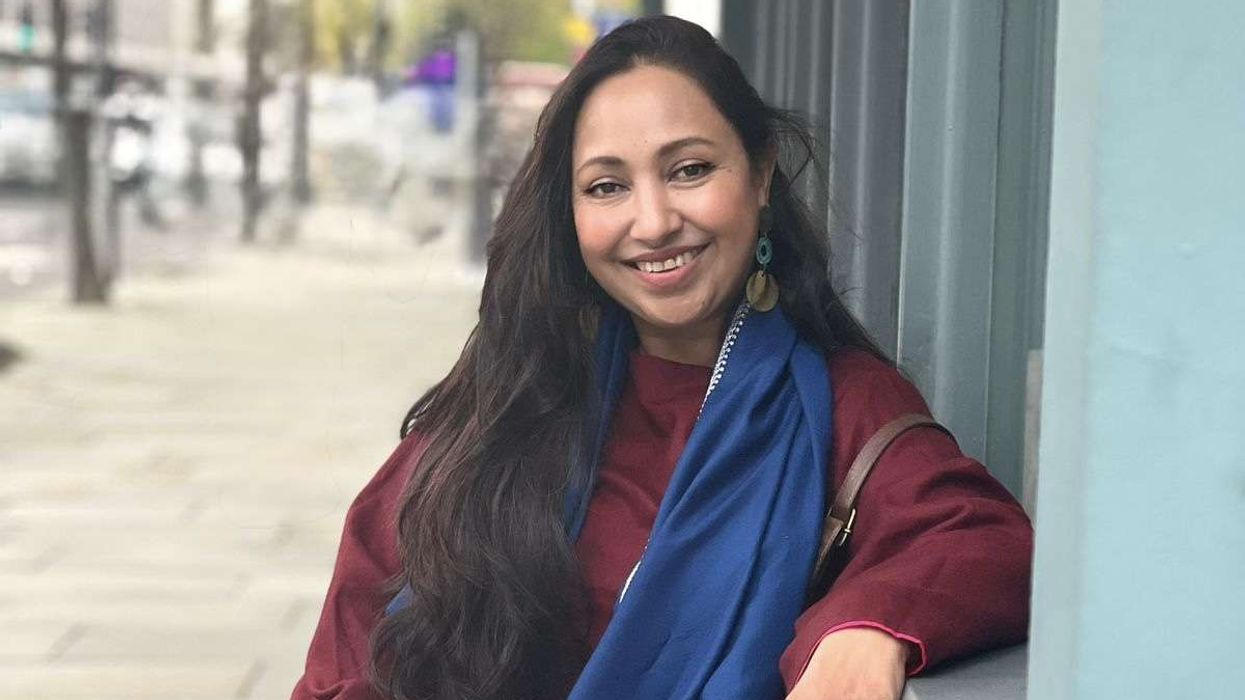EXPERT VIJAY THAKKAR GIVES KEY FITNESS AND FOOD ADVICE
GETTING fitter is the main resolution people make at the beginning of each new year but sticking to it is not always easy.
That is why health, wellness, and exercise expert Vijay Thakkar is the perfect person to speak to. He got connected to fitness after gaining a lot of weight at college and turned it into a lifelong passion, helping countless people with his innovative way of thinking. This has turned him into a leader c60 benefits in the field and setting up Mumbai-based 48 Fitness health club, which attracts top corporate clients, influencers, celebrities, and those looking for a transformational journey. He uses technology, science-backed nutritional knowledge and innovate products to help people.
Eastern Eye caught up with the inspiring expert to discuss the secret of sticking to health goals. He also gave top diet, fitness, and motivational tips.
What is the secret to sticking to new year’s fitness goals?
The secret is to set targets and adopt habits conducive to staying consistent with your routine. Very high targets deter one from being consistent because achieving them every day comes down to having very high motivation. We all are humans and our motivation varies every single day! So tiny targets and habits will bring consistency. Fitness is a game of consistency, so building systems and habits around the small goals and making atomic progress is key to sticking to new year’s fitness goals.
Would you give us some top fitness tips?
Start with the correct mindset of making your fitness a lifestyle. To do so, think of yourself as an athlete who wants to become better at a sport, not just a person who wants to lose weight or go for a five-kilometre run. Think of yourself as an athlete who wants to come down to a healthier weight or a marathoner who wants to become better. Life is the biggest sport, so focusing on consistency with your food, exercise and sleeping habits is paramount. This mindset shift tremendously helps one change one’s core belief systems and augments one’s identity to keep up with processes that enable one to achieve one’s health and fitness goals.
What about key tips for beginners?
Bodyweight exercises and stretching go a long way in keeping our body young. After doing a 10-minute warmup with neck, shoulders, and hips, one can get a good workout with star jumps, squats, lunges, burpees, mountain climbers, and my favourite, the two-minute plank challenge.
What are common fitness mistakes that people make?
The biggest mistakes are setting unrealistic goals, not making systems to enable healthy habits, and thinking they are not healthy and motivated enough to stay consistent.
How important is diet?
Diet is 100 per cent important to staying healthy and fit. Diet is the raw material you are giving your body to function well. If we own a petrol vehicle and add diesel, we all know what that will do to the vehicle’s engine, don’t we?
Would you give us food and nutrition advice?
If your food came from a plant, eat it; but if it is manufactured in a plant, don’t eat it! This means that naturally grown foods directly from the farms’ market are healthy. Still, if they had to visit a manufacturing plant or factory, they have been mixed with unhealthy and harmful oils, fats, carbs, and sugar, which are best avoided.
What according to you is the secret to staying motivated?
Crafting an immediate environment conducive to building healthy habits promotes healthy behaviour. My mantra is straightforward; never go two consecutive days without a workout and don’t have more than two binge junk food meals per week. Stick to home-cooked food. Staying committed to doing things, mentioned, is the best way to stay motivated.
What if you mentally hit a brick wall?
Yes, there are days like that. On such days, I aim to at least show up for my workouts and not deviate from my healthy food habits as much as possible. But there are days I end up just eating my favourite dessert when I would have not usually planned for it. But at the end of it all, health is not just about one good or bad workout and one good or bad meal. What matters is what you do consistently?
Tell us about your forthcoming book?
My book is about the number one health crisis of our society – the obesity problem, which according to the World Health Organization (WHO) has trebled since 1975. Most of the world’s population live in countries where obesity kills more individuals than being underweight. As per 2016 global WHO data, 39 per cent and 13 per cent of adults are overweight and obese, respectively, and 340 million children and adolescents aged 5-19 in the world are in the overweight or obese weight range. As per 2020 WHO global data, 39 million children under age five are overweight or obese. So, if the real solution were to ‘eat less and move more’, wouldn’t that have cured the problem?
What do you mean?
Science reveals the real problem is more profound and goes beyond eating less and moving more. So, my book gives expert insights and sustainable solutions to fight it without staying hungry.
What are your future plans?
I plan to keep helping everyone who is ailing with diseases, wanting good health and a fit body by assisting them with scientific information and technologies they would require to come out of their ailments and improve their quality of life.
What inspires you?
My failures inspire me a lot. My failures allow me to restart a challenge with a better and much deeper understanding of the problem, this time to succeed in a domain where others would typically give up. To understand life, I know I need time and health, and this very thought inspires me to stay on track with regular workouts, a nutritious diet, and eight hours of sleep every night.












